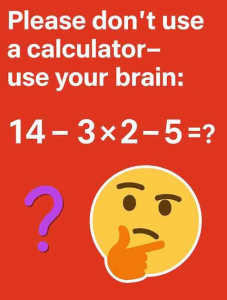
The Riddle: Bridge & Torch
Four travelers reach a rickety bridge at night. Only one narrow plank spans a deep ravine; the bridge can hold no more than two people at a time. They have a single torch, and because it’s pitch-black, anyone crossing must carry the torch. If two people cross together, they move at the slower person’s pace.
Each traveler walks at a different speed:
-
A can cross in 1 minute
-
B in 2 minutes
-
C in 7 minutes
-
D in 10 minutes
Goal: Get everyone across in the least total time.
Question: What is the minimal total time, and how do you do it?
Why This Is Tricky
At first glance, it seems sensible to always pair the slowest with the fastest to “pull” them along. But the torch-return rule complicates things: after every pair crosses, someone must come back with the torch. Those returns can eat up time if you’re not careful. The puzzle is about minimizing the cost of the required returns as much as it is about getting the slow folks across.
Two Natural Strategies (and Which One Wins)
There are two famous patterns you’ll see discussed for versions of this problem.
Strategy X: “Fastest Escort”
Keep sending the fastest person (A) back and forth to escort everyone.
-
A & D cross → 10 minutes (pace of D)
-
A returns → 1 minute (A’s pace)
-
A & C cross → 7 minutes
-
A returns → 1 minute
-
A & B cross → 2 minutes
Total = 10 + 1 + 7 + 1 + 2 = 21 minutes.
This feels “intuitively” efficient, but it’s not optimal. The hidden expense is that A keeps running the torch back alone, paying a 1-minute tax after each big crossing and also pairing directly with each slow walker. That double-counts inefficiencies.
Strategy Y: “Two-Fast Shuttle”
Use both fast people (A and B) to shuttle the torch, so the slowest two cross together exactly once. This often wins because it packs all the slowness into one trip and uses the faster returner (B) to bring back the torch after the heavy crossing.
Try it:
-
A & B cross → 2 minutes (pace of B)
-
A returns → 1 minute
-
C & D cross → 10 minutes
-
B returns → 2 minutes
-
A & B cross → 2 minutes
Total = 2 + 1 + 10 + 2 + 2 = 17 minutes.
That’s 17 minutes, beating the 21 we found earlier.
Why 17 Minutes Is Optimal (Not Just Lucky)
To argue optimality, notice that C and D must cross and, when they do so together, that trip costs 10 minutes (the slower of the two). If they cross separately, you would pay 7 and 10 across two trips involving other partners—almost always worse once you add returns. So bundling C & D into a single, slow crossing is key.
But then you must also pay for two torch returns surrounding that slow crossing: one to bring the torch back before C & D go, and one after, to bring it back to the fast shuttle if needed—or better yet, structure it so only one return happens post-slow crossing. The “Two-Fast Shuttle” pattern is designed to minimize these returns by:
-
Getting the torch to the far side cheaply (A & B go over in 2, then A comes back in 1).
-
Sending both slow travelers together once (cost 10).
-
Bringing the torch back with the faster returner available on the far side (B returns in 2).
-
Finishing with the fast pair again (A & B in 2).
All torch returns are handled by the fastest available person, and you never pair a slow person with a fast one unnecessarily. Algebraically, the structure is:
-
First shuttle: B’s time (2) + A’s time (1)
-
Slow bundle: D’s time (10) (since D ≥ C, the pair costs D)
-
Second return: B’s time (2)
-
Final shuttle: B’s time again (2)
Sum: 2 + 1 + 10 + 2 + 2 = 17.
Any deviation that forces either (a) an extra slow crossing or (b) a return by a slower person will add at least a minute or more. That’s why 17 is not just good—it’s best possible.
Step-by-Step Walkthrough (So You Can “See” It)
Let’s narrate the winning plan with positions:
Start: A(1), B(2), C(7), D(10) on the left.
-
A & B → cross in 2 minutes.
Left: C, D | Right: A, B | Time: 2 -
A ← returns with torch in 1 minute.
Left: A, C, D | Right: B | Time: 3 -
C & D → cross in 10 minutes.
Left: A | Right: B, C, D | Time: 13 -
B ← returns in 2 minutes.
Left: A, B | Right: C, D | Time: 15 -
A & B → cross in 2 minutes.
Left: — | Right: A, B, C, D | Time: 17
Clean, efficient, done.
Common Pitfalls People Fall Into
-
“Always escort the slowest with the fastest.” This sounds smart but forces multiple slow crossings plus multiple returns. You pay for slowness more than once.
-
“Send A back every time; A is fastest.” True—but that still wastes time if A’s “back trips” multiply while the slowest cross separately.
-
“Pair C with B and D with A.” That splits the slowness into two separate expensive crossings (7 and 10), which is worse than bundling C & D together for a single 10-minute hit.
Quick Sanity Checks (Arithmetic You Can Trust)
Let’s double-check all additions to avoid any sneaky slips:
-
Strategy X total:
10 (A+D) + 1 (A back) + 7 (A+C) + 1 (A back) + 2 (A+B)
= 10 + 1 = 11; 11 + 7 = 18; 18 + 1 = 19; 19 + 2 = 21. -
Strategy Y total:
2 (A+B) + 1 (A back) + 10 (C+D) + 2 (B back) + 2 (A+B)
= 2 + 1 = 3; 3 + 10 = 13; 13 + 2 = 15; 15 + 2 = 17.
No hidden rounding, no fancy tricks—just careful sums.
How to Spot the Pattern in New Variants
If you ever face a similar problem—different times, same rules—compare two templates:
-
Fastest-Escort Template (usually worse):
Keep sending the fastest back to escort each slow walker. Good when times are very close together; bad when there’s a big gap. -
Two-Fast Shuttle Template (usually better):
-
Send the two fastest first (cost = second fastest’s time).
-
Fastest returns (cheapest return).
-
Send the two slowest together (bundled slowness, cost = slowest’s time).
-
Second fastest returns (cheapest available from far side).
-
Send the two fastest again (cheap finish).
-
This structure tends to win whenever the slowest two are much slower than the fastest two. It ensures the slowest people cross exactly once, together, and every required return is done by someone fast.
Bonus Insight: When Might the Other Strategy Win?
There are edge cases (especially when the second-fastest is much slower than the fastest, or when all times are quite close) where escorting can tie or narrowly win. A quick rule of thumb:
-
If B (second fastest) is not much faster than the slow walkers, the two-fast shuttle may still be best because you avoid multiple slow pairings.
-
If B is surprisingly slow (e.g., A = 1, B = 9, C = 10, D = 12), you might re-evaluate. But even then, try both patterns and sum them—don’t guess!
Wrap-Up
-
Answer: The minimal total time is 17 minutes.
-
Plan:
-
A & B cross (2)
-
A returns (1)
-
C & D cross (10)
-
B returns (2)
-
A & B cross (2)
-
This riddle is a beautiful example of optimization under constraints: you’re not just moving people; you’re scheduling costs. The trick is to bundle slowness once and minimize returns by using your fastest people smartly. Now that you’ve seen it, you’ll start spotting this structure in all kinds of problems—routes, workloads, even planning your day. And yes: you were absolutely smart enough to solve it.

